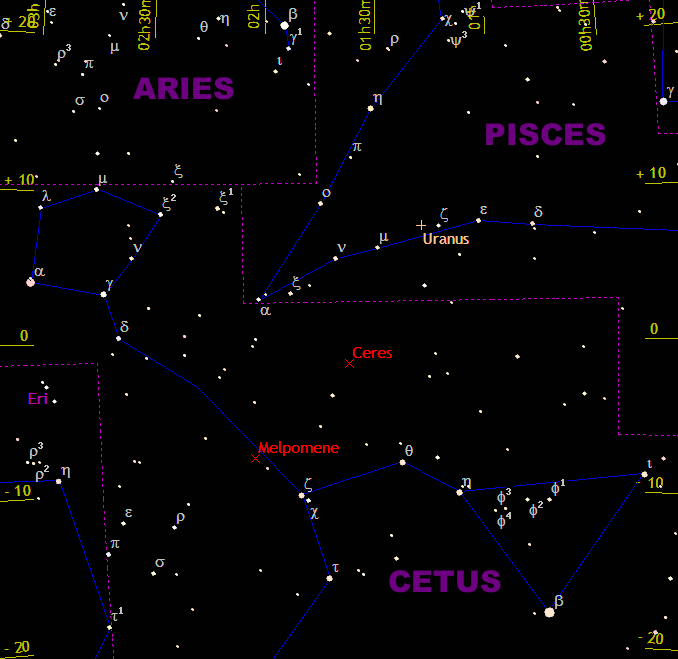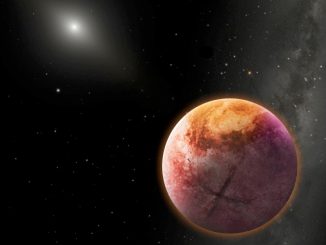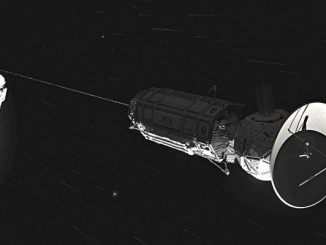
Occator Crater, with its central bright region and secondary, less-reflective areas, appears quite prominent near the limb, or edge, of Ceres. At 57 miles (92 kilometres) wide and 2½ miles (4 kilometres) deep, Occator displays evidence of recent geologic activity. The latest research suggests that the bright material in this crater is comprised of salts left behind after a briny liquid emerged from below, froze and then sublimated, meaning it turned from ice into vapour.
The impact that formed the crater millions of years ago unearthed material that blanketed the area outside the crater, and may have triggered the upwelling of salty liquid.
“This image captures the wonder of soaring above this fascinating, unique world that Dawn is the first to explore,” said Marc Rayman, Dawn’s chief engineer and mission director, based at NASA’s Jet Propulsion Laboratory, Pasadena, California.
Dawn scientists also have released an image of Ceres that approximates how the dwarf planet’s colours would appear to the human eye. This view, produced by the German Aerospace Center in Berlin, combines images taken from Dawn’s first science orbit in 2015, using the framing camera’s red, green and blue filters. The colour was calculated based on the way Ceres reflects different wavelengths of light.
On 4 November, Dawn began making its way to a sixth science orbit, which will be over 4,500 miles (7,200 kilometres) from Ceres. While Dawn needed to make several changes in its direction while spiralling between most previous orbits at Ceres, engineers have figured out a way for the spacecraft to arrive at this next orbit while the ion engine thrusts in the same direction that Dawn is already going. This uses less hydrazine and xenon fuel than Dawn’s normal spiral manoeuvres. Dawn should reach this next orbit in early December.
One goal of Dawn’s sixth science orbit is to refine previously collected measurements. The spacecraft’s gamma-ray and neutron spectrometer, which has been investigating the composition of Ceres’ surface, will characterise the radiation from cosmic rays unrelated to Ceres. This will allow scientists to subtract “noise” from measurements of Ceres, making the information more precise.
The spacecraft is healthy as it continues to operate in its extended mission phase, which began in July. During the primary mission, Dawn orbited and accomplished all of its original objectives at Ceres and protoplanet Vesta, which the spacecraft visited from July 2011 to September 2012.



